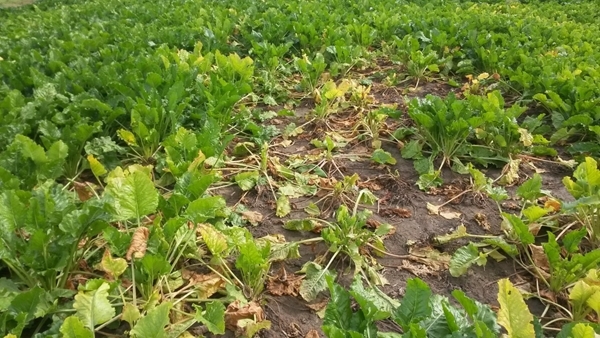
The use of pesticides is hotly debated, but arguments around it are often absolute and lack nuance. The government derogation for farmers to use the neonicotinoid thiamethoxam on sugar beet this year (dependent on evidence of potentially yield threatening levels of pests) created lots of headlines, plenty of outrage and, at the time of writing, 50,597 signatures to reverse the decision.
This is to protect their crop from the beet yellows virus spread by aphids, a serious problem that has significantly reduced yields in recent years. This issue alone presents the complexity of the situation. A pest damaged crop will take up less fertiliser than that applied, as yields have fallen by 20-25%, and as a result this excess fertiliser could leach from the soil, negatively impacting water quality.
We used our submission to make the case for a more nuanced and balanced approach. Each time a product is banned (or, indeed, approved) it will have direct and indirect impacts. One such example is banning the herbicide glyphosate. There are undoubtedly some benefits, but little attention is given to the potential changes it will bring about – how much more ploughing will take place? What will this do to carbon emissions? To soil health? To water quality?
Changes to the environment do not happen in isolation and we are calling for a Comparative Risk Assessment to be undertaken before such decisions are made. We also encourage the government to work with manufacturers and users to develop mitigation measures whilst alternative solutions are developed, rather than waiting until emergency solutions are needed.
Where the Precautionary Principle exists – acting to prevent potential harm before it happens – so too should the Innovation Principle, ensuring progress and invention aren’t hampered. Without being part of the Common Agricultural Policy, we can move away from the hazard-based approach used by the EU and focus on a risk-based approach.
There is much good work to build on, particularly the progress made by the Voluntary Initiative and Pesticides Forum, but there is more than could be done to support farmers in making the right decisions. By improving Environmental Information Sheets farmers and agronomists would be empowered to choose which products they use according to where and how they are using them. Those spraying near water can use a product with low aquatic invertebrate toxicity and low leachability, or if they are to be used near a pollen and nectar mix, a product with lower invertebrate toxicity would be preferable.
Better communication of the benefits and effectiveness of Integrated Pest Management (IPM) can also help improve the sustainable use of pesticides by overcoming trepidation amongst farmers. The benefits crop rotations provide for soil health are well-known, but their use in preventing pest build-up is probably less so.
Further research on the benefits and risks of an IPM approach on different farming systems will hopefully provide clarity and reassurance. Similarly, if we want farmers to embrace this move, financial security is important. With several thousand people signing petitions about thiamethoxam, perhaps increased public awareness could support premiums for crops grown using IPM.
You can read our full submission here >